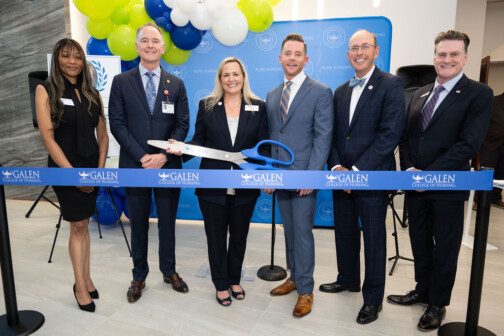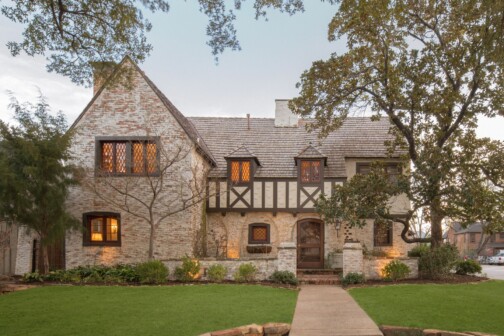
There are construction cranes in the sky. Some prices for construction materials may be rising. Multifamily construction seems to be exploding. Some building industry professionals are smiling again. Are we back? Is it over? Are we ready to let the good times roll? Unfortunately, most of us still struggle.
Most of the real estate and design professions are currently in some state of transition. After nearly half a decade of the best years in practice that many design professionals had ever experienced, in late 2008 we all encountered the Great Recession. Many of us had to turn in our “Masters of the Universe” t-shirts. We got slammed! Life and practice changed during the recession, and may never return to where we once were. Some changes may, unfortunately, be permanent. So what does that mean?
Last month, nearly 20,000 architects met in Denver for the annual American Institute of Architects convention. There were many more smiles and much more cautious optimism than in recent past years, but the talk still gets back to “How are you really doing”? We have probably found a way to cope, and times are better, but we are progressing from a very low threshold. The ”bad years” are more than a memory; they are a big part of the new reality.
The AIA is made up of more than 81,000 members. The organization’s chief economist, Kermit Baker, estimates that there are approximately 35,000 fewer architecture positions at U. S. architecture firms now than there were at the end of 2008. He also notes that many of the professionals who occupied these positions have left the field permanently or work only part-time; most are expected to attempt to return to full-time positions as opportunities arise. There are no separate statistics showing how many fewer unlicensed staff members that worked at architectural firms there are. It is probably a very large number.
In another previous recession lasting off and on during the late 1980s through the early 1990s, speculation is that nearly an entire generation of young professionals left the profession. Many knowledgeable parties would maintain that is has happened again. So where might many of these former members of the design professions have gone?
They probably are doing something that they still find intellectually challenging. They may be still building things or thinking about becoming a contractor or tradesperson. They may be designing landscapes or web sites. Maybe they are involved with saving energy through creating value by improving building envelopes. They might have gotten involved with manufacturing engineering. Many of these jobs come with fulfilling financial rewards.
Most of the professionals involved in any kind of real estate—contractors, tradespeople, real estate brokers—everyone has been profoundly affected by the recession. But we all have survived! We are all adapting to the “new normal,” as much as there is such a thing that is comprehensible. Some firms and businesses are still hurting, while others appear to be thriving. Margins however, continue to be slight. Prosperity depends on many factors: luck, your marketing abilities, your areas of interest and the focus of your practice, and your relationships.
So was there anything positive that has resulted from this economic carnage? Maybe there was. In a harsh way, we certainly saw an example of the survival of the fittest, the most adaptable and flexible. The businesses that had a financial cushion, had weathered previous storms and knew what to look for and how to react, and who were lucky. We have been resilient.
With regard to the profession of architecture, many things are different. The Architectural Billing Index, a reflection of the health of our profession, is in general (considering some month-to-month variance) rising. But it is coming off a very LOW bottom, so it is easier to look good.
Multifamily residential and hotels might be doing the best, but other commercial is still somewhat soft. Healthcare design and construction will probably benefit from the Affordable Care Act. But no one currently knows the extent of this impact.
There appears to be some indecision regarding educational facilities. The population demographics (the echo boom) have likely passed. K-12 will likely have to be reasonable in what gets built, and will be subject to voters agreeing with needs assessment via bond elections. There may be replacement facilities, but student populations will likely affect the need for new schools. Universities are being subject to more and more ongoing financial scrutiny, so legislators hear from their constituents when tuition rises or spending increases seem unwarranted. Colleges and Universities are responding to the marketplaces for their graduates, and staff reductions in different departments (law schools, etc.), unheard of in the past, are becoming reality.
So other things that are likely to happen are increased mergers and firms broadening their operations and offerings. New offices in promising new geographic markets, the incorporation of new disciplines within a firm, and new services provided for new client’s projects. Corporations are spending money for design and construction that benefits their staff and results in increase cooperation, collaboration, performance, productivity and profits.
Design firms can and are participating in the “new marketplace “in many different ways. LEED (Leadership in Energy and Environmental Design) design, “green” design and construction, and sustainability has become mainstream. The energy crisis of the 1970’s resulted in buildings being built better than they had been in 1972. By 1978 the use of greater amounts of and new types of insulation, such things as double glazing using “low E” glass was common. Bill Caudill would be proud. But even as recent as five or six years ago, the idea of energy conservation was often considered “quaint” by many building owners, developers, contractors, and even us project designers. There had been many improvements in prior decades. We asked then why should we be doing more? The marketplace was not asking for it.
In the time of the Great Recession, such things as significant improvement in energy usage, glazing, shading devices, new materials, solar and environmental orientation, contributes to building performance that is now expected, demanded and legislated. Energy saving is now an accepted truth that cannot be denied. We are beginning to see more “smart components and systems” that can provide performance data via the internet to building operators, manufacturers, designers, and builders—measurements that detail how buildings work. We will know what component and systems really works best and which ones do not work at all.
Designers and builders are embracing BIM (Building Information Modeling) as a way to build projects that will result in much-improved project quality and coordination during costing and construction. BIM is defined by Wikipedia “as the process involved in generating of digital representations of physical and functional characteristics of a facility. The resulting building information models become shared knowledge resources to support decision-making about a facility from earliest conceptual stages, through design and construction, rough its operational life and eventual demolition.” That is a sentence-and-a-half!
Prior to the Great Recession, BIM was considered somewhat exotic and novel. Now it is much more mainstream, with a very large portion (perhaps as much as 60 percent) of projects being designed and constructed incorporating this technology. As a building owner or user, you really would like to know where that shut-off valve or fire protection main line is located. If all parties play by the BIM “rules”, projects can be built with better coordination, less waste, more efficiencies, and reduced time of construction. Just do not tell the design professionals that it should take no more time or be less costly to create than other methods. The outcomes have wonderful positive potentials, but they will come with a cost.
Design and building workers now utilize the “cloud” to work collaboratively with other industry professionals across town, across the country, and across the globe. Projects are more integrated, allowing one staff member to perform tasks that can be shared by other workers remotely, at another time, or continuously. Design, fabrication, installation, and construction happen far away from the other operations with less lost time and better understanding. People that have never met face to face now work together using best practices to create optimum building solutions.
Population is returning to the central city. Mass transit is a mandate for when the new adult generation lives. There is much better integration if complementary building uses that lead to a richer urban experience. Technology and social media means that we can be connected to one another in new ways previously only seen in movies or on the television. I can make my granddaughter laugh when I make a silly face via FaceTime even though she is 250 miles away.
Things have changed. Some have resulted in good, some have caused pain and hardship. Today in the building design, real estate, and construction professions, all is not sad or forlorn. But it is different. We are all adapting to new times, new ways, new economics, and the new reality. We just need to figure out what that is.





